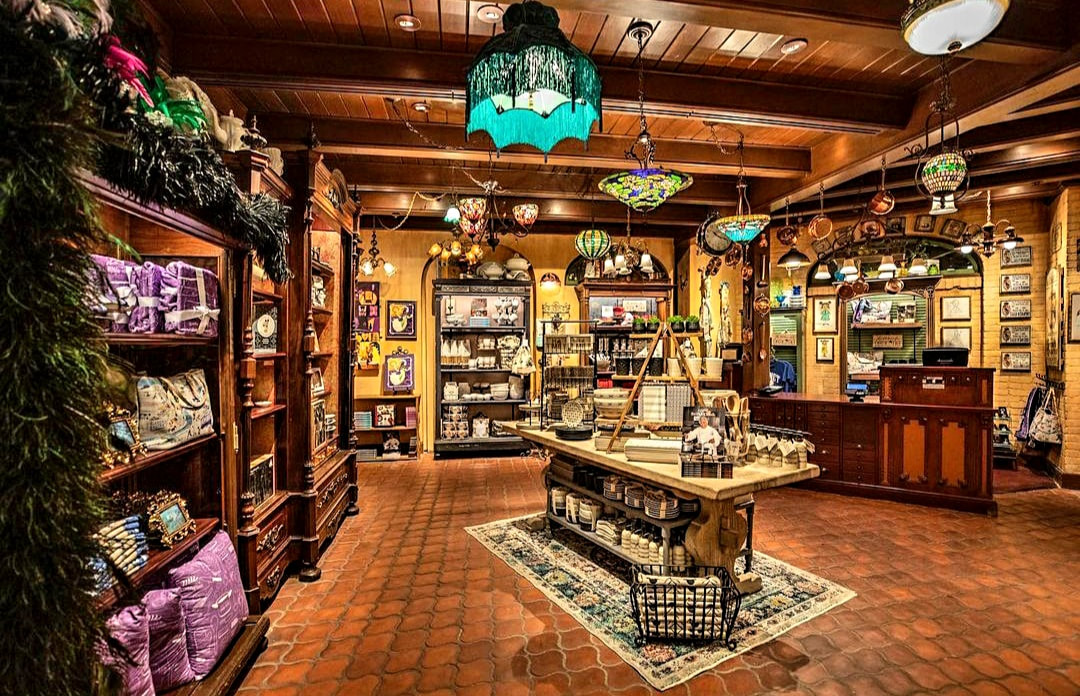|
In 1908, John Hench - Disney’s Renaissance artist - was born in Cedar Rapids, Iowa. In his legendary 64 year career with the Walt Disney Company, John left his mark in films, theme parks, and hotels. Former head of Disney Imagineering Marty Sklar said "Other than Walt Disney himself, no one symbolizes the Walt Disney Company more than John Hench.” After joining the Walt Disney Studio in 1939 John worked on both animated and live-action films as a set designer, artist and on special-effects. In 1954, John was one of the many studio employees asked to help with the design and construction of Disneyland. As an Imagineer, John’s first project involved the attractions in Tomorrowland. On the Rocket to the Moon attraction John worked with famed German rocket scientist Wernher von Braun on the design of the Moonliner. In his book, Designing Disney, John explains: “I wanted an elegant shape that suggested high speed even though it would be stationary…From any angle in Tomorrowland, the rocket appeared ready to blast off for the moon.” John helped establish the philosophy behind Disney design from the ideas and concepts first shared by Walt himself. In a 1978 article in New West magazine titled “Disneyland is Good for You,” the author notes “Hench has become the Disney organization’s ranking theoretician on how movies and theme parks can be programmed to produce effects on the unconscious as well as conscious mind.”
The article provides an extraordinary foundation for the psychology behind Disney theme park design and features extensive comments from Hench. He explains that “…the order here at Disneyland works on people, the sense of harmony. They feel more content here, in a way they can’t explain.” Hench explains that the essential message of Disneyland is that “there is nothing to fear….What we are selling is not escapism but reassurance.” It all started with a mouse…or a suitcase and a dream, or a paper route…wait…news butcher…no, Red Cross ambulance driver. Well, it started because Walt persevered!!! Thanks Uncle Walt!
Walt’s uncle Robert was pretty key in the early days. He really helped out Ub and Walt. They were barely able to rub two nickels together. Roy was still selling vacuums. Herb was busy at the post office. It's not clear when Ray started selling insurance. Ruth was still at home with Flora and Elias. Uncle Robert really gave them the lift both with some funds and a little temporary studio. Disney Legend Herb Ryman was born in Vernon, Illinois. Ryman had an illustrious Disney career and cemented his legacy as the artist Walt Disney turned to when he needed someone to translate his dream of Disneyland onto paper. Ryman worked as a storyboard illustrator at MGM before joining the Walt Disney Studio in 1938. He would work on animated features, including Fantasia and Dumbo. On September 26, 1953, Walt called Herb Ryman over to the studio and they spent the weekend putting together concept art and pitch documents for Roy to take to New York for meetings with potential investors. The Disneyland concept map drawn by Ryman over the weekend was the first comprehensive look at what Walt was planning. Among Ryman’s many contributions in the design of Disneyland was the look of Sleeping Beauty’s Castle. Ryman visited the Neuschwanstein Castle in Germany, which became the inspiration for the castle, and provided sketches that were then used by legendary Disney model maker Harriet Burns to create scale mock-ups. Ryman then painted the models, including the sky blue tops for the turrets which are a signature of all Disney Park castles. As the design work for Disneyland moved forward, Ryman drew concept art for areas of the park including Frontierland, the Jungle Cruise and Main Street, U.S.A. Constructing and opening the park in less than a year was an extraordinary experience for those involved. Ryman said “It was frantic, frantic work on the part of everybody. In fact, now that I look back on it, I don’t know how it got done. I really don’t.”
NEWS -- Eudora's Chic Boutique featuring Tiana's Gourmet Secrets is NOW OPEN adjacent to the Blue Bayou in New Orleans Square. Morgan “Bill” Evans was born in Santa Monica, California. As Disney Imagineering Legend Marty Sklar describes him, “Bill defined Disney theme park landscaping.” Walt Disney’s first encounter with the Evans family came years before Disneyland was planned. According to Disney Imagineer Paul Comstock, a young Walt purchased roses from the Evans and Reeves Nursery for the Disney family home in the San Fernando Valley. Many years later, Walt hired Bill and his brother Jack to landscape the backyard at his Holmby Hills home which also incorporated Walt’s Carolwood Pacific backyard railroad. In 1954, the Evans brothers were asked to landscape a theme park project Walt was going to build in Anaheim. In an interview with author Jim Korkis in 1985, Bill talked about how much Walt valued landscaping: “Fortunately for us, he wanted a lot of green plant stuff. That was one of the elements Walt felt would separate his park from the Coney Island format.” One of the biggest challenges in landscaping the park was finding the large, adult trees that would appear to park guests as though they’d been there for years. As luck would have it, the construction of Disneyland coincided with the building of a number of freeways throughout the Southern California region. Bill and his team made arrangements with freeway construction crews to dig, box and ship trees slated to be bulldozed over to Disneyland. Bill told Jim Korkis: “When I’m at Disneyland, I can tell you tree after tree. This one was from the Santa Monica freeway and that one was from the Pomona freeway and so on.” After Disneyland opened, Bill was given the title of director of landscape architecture. He oversaw Disneyland additions as well as the master plan for Walt Disney World.
In 1990, a Main Street, U.S.A. window above the Opera House was dedicated in his honor. It reads: “Evans Gardens, Exotic & Rare Species, Freeway Collections, Est. 1910, Morgan (Bill) Evans, Senior Partner.” The Freeway Collections mention is a nice nod to the trees he “rescued” from the bulldozers and transported to the park. Bill was named a Disney Legend in 1992. |
Categories
All
Archives
July 2024
|






















 RSS Feed
RSS Feed
